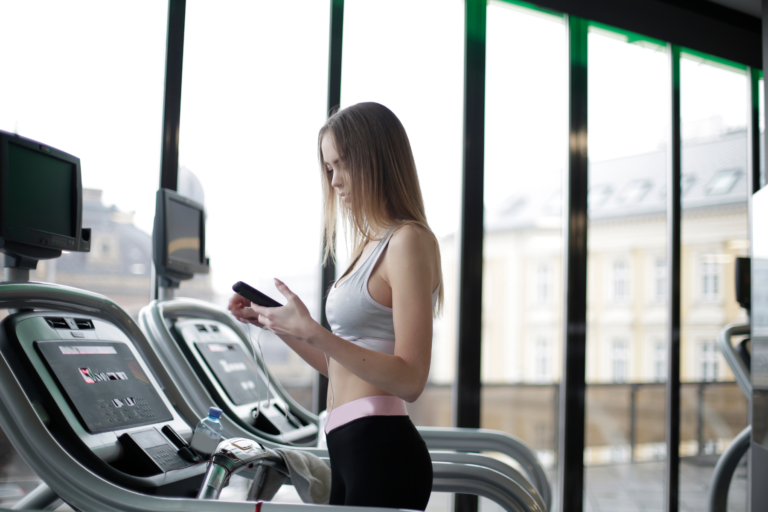
Introduction
Today, let’s explore a simple yet highly effective tool that can be a game-changer for those grappling with chronic low back pain and knee pain – benefits of walking backwards on treadmill or retro walking. It may sound unconventional, but bear with me because emerging research suggests that backward walking could be a key therapy for chronic low back and knee pain sufferers as walking backward leads to greater activation of the paraspinal muscles.
What Exactly is Walking Backward or Retro Walking?
The benefits of walking backwards on treadmill or retro walking are exactly what it sounds like – the benefits of walking in reverse. Surprisingly, this seemingly simple activity can have profound effects, especially for those dealing with chronic low back pain and/or knee pain.
The Research Speaks for Itself
Researchers conducted a significant study on female athletes concluding improved balance in high school female athletes. These individuals were tasked with walking backward for 10 minutes, three times a week. While many studies of this nature are performed in controlled environments like gyms, we encourage you to embrace a more naturalistic setting as long as it’s safe.
Getting Started
When you ask someone to walk backward, they often become tense and nervous, instinctively wanting to look behind them. However, the key is to maintain an upright posture and focus on a smooth transition to backward walking. During this process, your foot strike will change, and you’ll find yourself extending your hip. Additionally, it’s crucial to pay attention to proper arm coordination, as this is an aspect where many people tend to get confused when they start walking backward. Especially if you’re venturing outdoors or within your home, start slowly to ensure there are no tripping hazards or potential falls.
Incorporating Benefits of Walking Backwards on Treadmill into Your Routine
If you’re doing this outdoors, begin with a regular forward walk, then turn around and take 10 to 20 steps walking backwards before resuming forward walking. Incorporating some backward walking practice throughout your walk can yield significant benefits of walking backwards. The reason behind its effectiveness lies in the alterations it brings to impact forces and muscular activity when your foot hits the ground.
The Brain-Body Connection
Beyond the physical benefits of walking backwards on treadmill, this exercise stimulates the vestibular system in a unique way compared to our regular movements. Some mild dysfunctions in the vestibular system have been linked to chronic low back pain. Therefore, walking backwards is a readily accessible tool that can potentially benefit almost everyone.
The Muscles Involved
When you engage in walking backwards on treadmill and/or on a level ground, you activate specific muscle groups that don’t typically come into play during regular walking or running. Notably, the psoas muscle in the abdominal area, the quadriceps, and certain shoulder muscles get a workout. Walking backwards often causes a forward-leaning posture, offering you the opportunity to engage muscles that are usually dormant.
Strengthening and Balance
Incorporating retro walking into your routine can help strengthen various muscle groups, including the glutes, hamstrings, and the anterior tibialis, which is located in the front part of the lower leg. This study reveals that backward walking on a treadmill improved balance and cardiopulmonary fitness.
Additionally, this practice activates various parts of your brain and neurological functions, providing a multitude of benefits. When comparing forward walking to backward walking, it becomes evident that walking in reverse is more efficient in stimulating cerebral activation.
The Pain-Relief Connection
If you’re dealing with knee pain, particularly in the front part of your knee, or chronic low back pain, walking backwards can be a game-changer. It helps alleviate discomfort by strengthening the glutes and hamstrings, ultimately restoring balance to your body, which can lead to improved posture and coordination.
Safety First
Remember that while walking backwards shows promise in managing chronic low back pain and improving overall well-being, individual results may vary. Before getting any benefits of walking backwards, it’s essential to consult with your doctor. Safety should always be a top priority, and we strongly discourage attempting this without proper guidance.
Starting Slowly
Begin on a flat surface, ensuring there are no obstacles that could lead to accidents. For those looking for added stability, consider starting on a treadmill where you can hold on and gradually increase your pace. Even after just a short distance, you’ll likely notice the strengthening effects, bringing much-needed relief to your knees and back while enhancing your overall posture.
In conclusion, while walking backwards or retro walking may seem unconventional, it has the potential to be a valuable tool for managing chronic lower back pain. As always, prioritize safety and consult with a healthcare professional before starting any new exercise regimen. So, why not take a step backward towards a pain-free and healthier you?
Frequently Asked Questions (FAQs)
What is walking backwards or retro walking?
Retro walking, also known as backward walking, is the act of walking in reverse. It involves taking steps backward instead of the traditional forward motion.
How can retro walking benefit chronic low back pain?
Retro walking engages specific muscle groups, such as the glutes, hamstrings, and abdominal muscles, which are often underutilized during regular walking or running. Strengthening these muscles can alleviate chronic low back pain and improve overall posture and coordination.
Is walking backwards safe for everyone?
Can I get the benefits of walking backwards outdoors?
Can I get the benefits of walking backwards on treadmill?
How often should I incorporate walking backwards into my routine?
What should I focus on when practicing retro walking?
Are there any precautions I should take while retro walking?
Can walking backwards help with knee pain?
How soon can I expect to see results from walking backwards?
The timeframe for observing results may differ from one individual to another. Some individuals may notice improvements in posture and reduced pain after a few weeks of consistent retro walking, while others may require more time. Patience and consistency are key.
For general inquiries, feedback, or questions about our content, please feel free to – Contact Us
